Jessica Piper
Advisor: Mercedes Garcia-Holguera
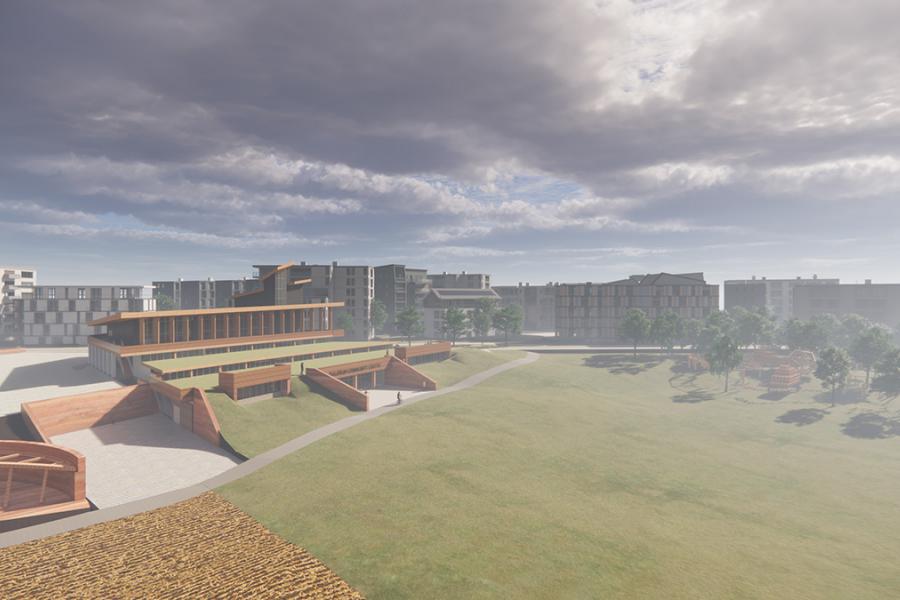
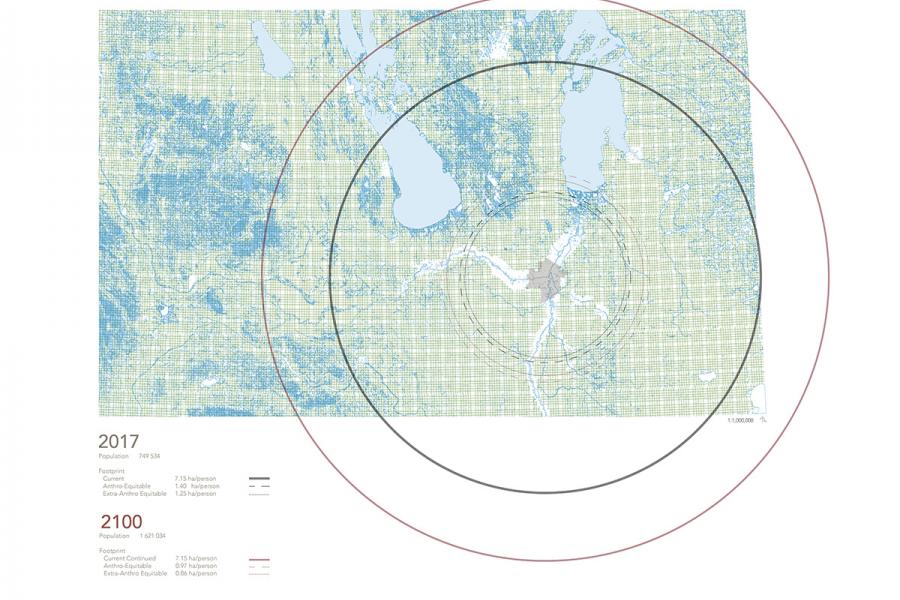
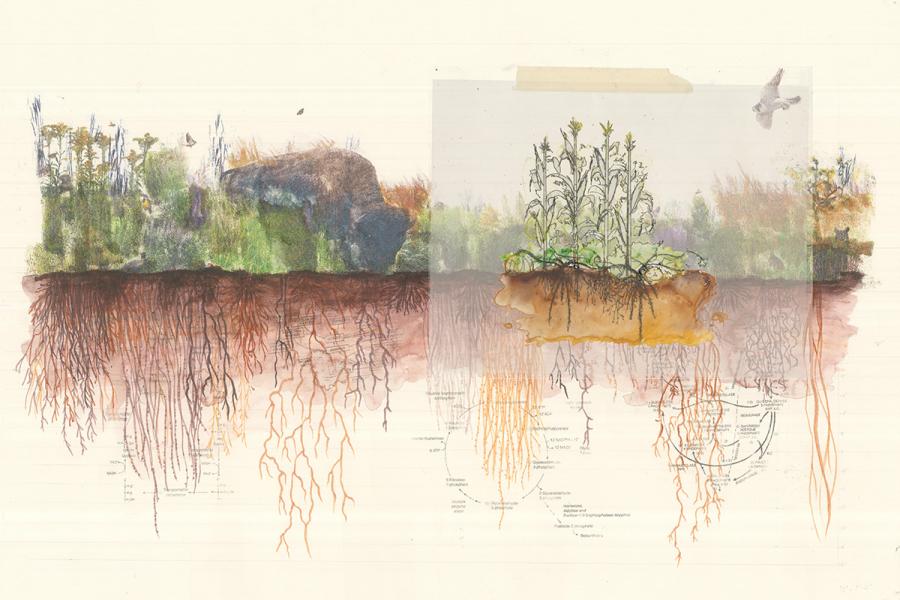
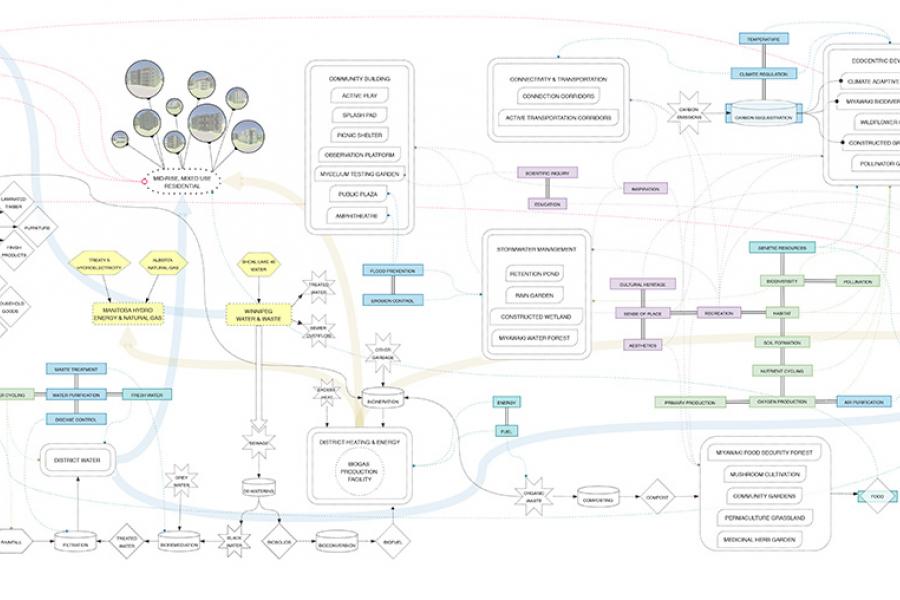
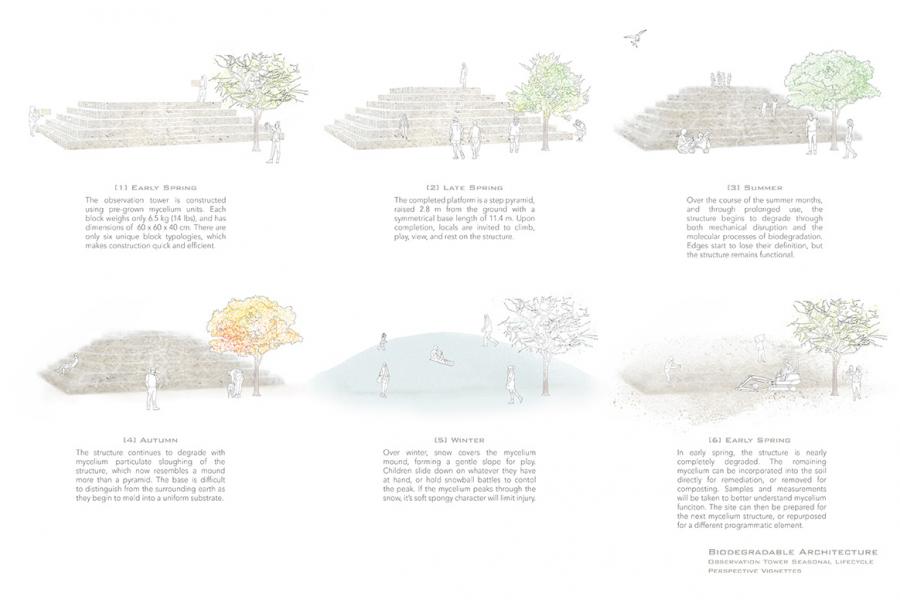
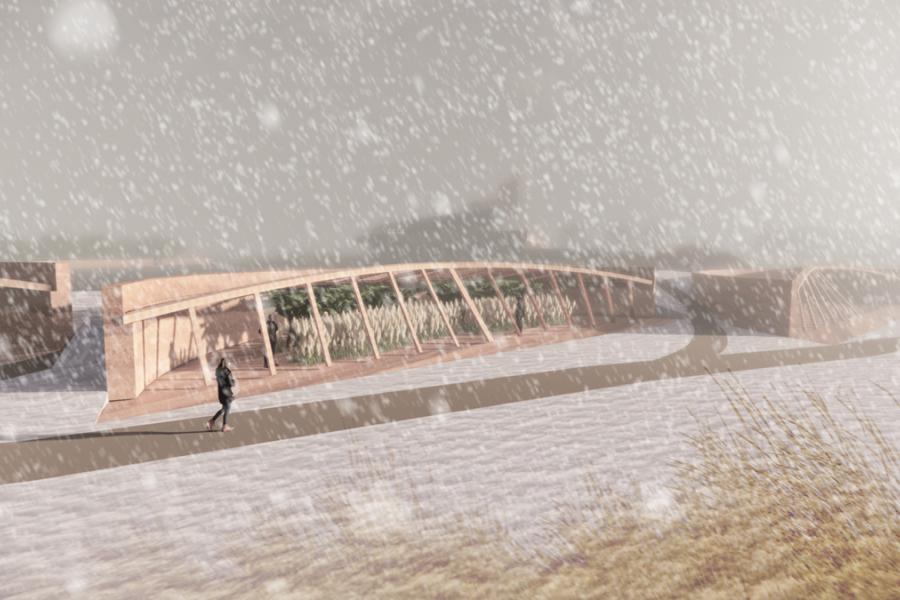
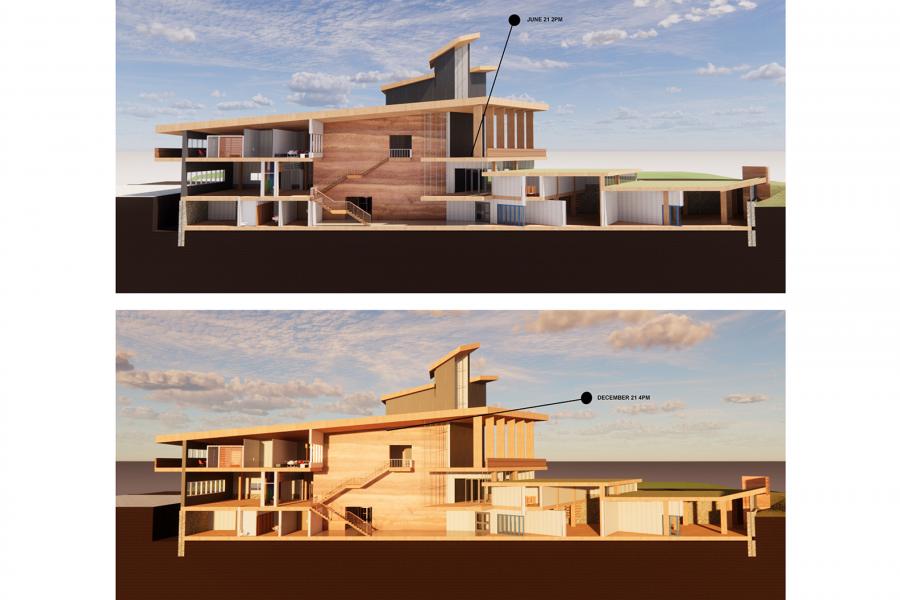
Biological Architectures: Regenerative Urban Design in Winter Climates
Sustainability in architecture is an essential design strategy in response to global concerns with anthropogenic climate change and other human impacts on the earth. Buildings, from design to construction, and eventual demolition, are one of the largest global consumers of energy and resources and producers of greenhouse gases and other waste products. The many existing, well-considered strategies and methodologies that attempt to address pervasive, unsustainable building are increasingly insufficient in their response to growing environmental crises. This thesis explores the potential application of systemic, dynamic design processes in attempt to transition towards a more resilient and sustainable urban model in winter climates.
As we face the ongoing climate crisis, it is imperative that we transition away from finance-driven development that currently characterizes ‘green design’ towards a paradigm that values social equity and environmentally sound approaches over short-term financial gain. This necessitates a pivot away from traditional, linear design and building strategies that consider buildings as discrete independent entities, into a comprehensive, systemic and resilient approach to design. Social sustainability is especially important to develop in this context: sustainable design principles simply cannot be effective if they are only accessible to the wealthiest, most privileged sectors of society. Ultimately, a successful paradigmatic transition will require a broad-scale, multi-faceted approach, including (1) economic and legislative incentives; (2) social, cultural and political pressure, especially from grassroots organizations and local changemakers; (3) an applied, systemic understanding of architectural and urban design; and (4) technological development and innovation.
As an exploration of one possible trajectory of this paradigmatic transition, this thesis primarily engages with biomaterials, biomimetic design strategies and biocentric principles within a regenerative design framework. It proposes a restorative reclamation of the CP Railyards in central Winnipeg, and addresses design at the urban, community and architectural scales. At the urban scale, the proposal creates a large ‘biocentric build zone’ at the core of the CP Railyards with additional mid-rise, mixed-use zoning to support it. Connection corridors permeate throughout the site, remediating the lack of access that currently characterizes the site. The thesis focuses into a small region of the CP Railyards for further development, which is designed to foster a local circular economy. There are several architectural focal points in this region, including a community centre, picnic shelter and observation platform that engage with structural mycelium as a key element.
Architects and architecture must acknowledge their historic and ongoing failures to meaningfully address social inequity and environmental sustainability. The cascading feedback loops of anthropogenic climate change necessitate a swift and emphatic transition towards a new paradigm of comprehensive systemic thinking in design. Through applied principles of biocentrism and regenerative design, and the use of renewable biomaterials, biological architectures are one of many possible trajectories towards an aspirational, equitable future.
